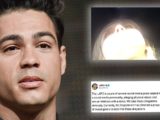
How Trump Learned to Love Twitter
July 15, 2019From THE METHOD TO THE MADNESS: Donald Trumps Ascent as Told by Those Who Were Hired, Fired, Inspiredand Inaugurated by Allen Salkin and Aaron Short. Copyright 2019 by the authors and reprinted with permission of St. Martin's Press, LLC.
Roger Stone: As soon as (Donald Trump) did not run in the 2012 election, he had immediate sellers remorse. I stayed on for a month or two after he decided not to run because he wanted to preserve his options.
Sam Nunberg: He hired Roger and Roger paid me a portion of his fee. Roger was the senior partner and I was the day-to-day associate, managing the account. Part of it was to keep him relevant and make news, and keep him involved in this political process. How do we do this? We started doing Twitter. He already had a Twitter account. He started tweeting. Obama was already using Twitter. Others were using it.
Roger Stone: Sam would get up very early, go online, look at Drudge Report and other headlines, suggest some tweets, and send them to me. I would add some, take some out, pass them out. Sometimes Trump would use some of them, but most of the time not. Most of the time he would come up with his own tweets or he would do some combination.
Sam Nunberg: One of the things I talked with him about was you really pissed off a lot of people by being a tease. He regretted not running. With that said, he was in the midst of real estate deals, such as Trump Hotel DC, and he had The Apprentice.
Justin McConney: The Apprentice was filming that fall. Hes a celebrity, he decided not to run, and my focus was keeping him relevant in PR and having him talk about anything and everything. The idea was translating the Donald Trump who was very interesting in the New York papers throughout the 80s and 90s to social media. I started doing these video blogs with a little Panasonic point-and-shoot camera, because I wanted to give it that purposefully webcam-like, low-budget look. Id walk around with a small camera on my suit jacket, and I would get him to answer tweets and speak about current events. If I get him to say something that goes viral hell see it on TV or in a newspaper article and understand the value of social media. It was a way to put him in more of a positive, comical light after what was negative PR from the Correspondents dinner and the birth certificate.
His desk was always messy. And that was an interesting thing to video blog. Because when we started doing them, the late-night comedians would make fun of the stuff on his desk. Trump said to me, Should we clean it up? I said, No. If anything, lets leave it a mess because it makes you more relatable to people. Lets do a video explaining why your desk is a mess. And he actually did a video explaining why his desk was a mess. He had so much stuff, it got to the point where he would have framed photos on the floor lined up not only in his office but going around the reception area. He actually has a closet that I found one day. He had all these old photos from the 80s and 90s that all the old paparazzi would send to him. I started using them for Instagram, for Throwback Thursday.
On May 31, 2011, Sarah Palin rolled into New York on her One Nation bus tour to gin up attention for her own White House bid. Trump agreed to meet with her, and the two split a pizza at a Manhattan branch of Famous Famiglia. Palin told CNN the pair gabbed about specific candidates and potential candidates, and kind of just what our perception was of each of these folks.1 Journalists and comedians focused not on the politics of the meeting but on how Trump ate his pizza slice with a knife and fork instead of the classic New York way of picking it up and folding it in half.2 That gave McConney an idea to spoof the coverage and show Trump the power of social media.
Justin McConney: There was a meeting that was arranged for Sarah Palin and Trump to go for pizza. All the coverage was centered on him using a fork and knife. I wanted to be the first guy to get a response out of him on this. If hes willing to do it and hes wanting to have a sense of humor about this, it would be a turnaround for him.
I went in the next day and said, Mr. Trump, would you want to answer why you used a fork and knife to eat pizza? Surprisingly he said, Sure. We filmed this video blog at his desk, we put it on YouTube, we linked it on Twitter. It gets picked up by the media, its on The Daily Show, its written up in various major outlets. The next morning I get called into his office. That was amazing, he said. You dont understand, years ago Id have to do 20 different interviews to get that amount of TV coverage. Are you telling me that this social media stuff with videos, that this could happen again? Thats what started to sell him on tweeting more and vlogging more.
Sam Nunberg: He gives a speech at Ralph Reeds Faith and Freedom Conference [on June 3]. He blows the roof off. Great speech. Amazing. Everything was good. Roger then calls up Trump, and says we have an idea: you running as a third-party candidate, and you control the Electoral College, and then you can pick who runs. We sent him a memo. Roger said social media can run this campaign from Trump Tower. All we had to do was get into the debates.
Justin McConney: It was very analog back then because he did not use a computer and he was still on a flip phone. I would print out his Twitter mentions, bring them to him, and he would take a Sharpie and mark which ones hed want to retweet, and then hed write down his responses on them. I would have to go back and type out his response and do the retweets.
When it got to the point of him dictating tweets, the way the process would work is that it was almost like an editorial meeting. First thing in the morning Id show up at his office, Id pitch him topics to talk about. I would check out what was in the news and what was trending. Or he would pitch me what he would want to speak about. Then Meredith [McIver] would usually come in, jot the notes down, and sometimes we would have to edit the tweets down because Trump would just talk. Then Id figure out which hashtags to put in, who to tag.
Meredith was outside his office, so it wasnt uncommon for him to shout out a tweet to Meredith. She would come in, write it down, and then put the tweet out. If I was in his office and he came up with a tweet or I pitched a tweet to him, I would put it out. Meredith and I would split the job of posting the tweets. If he wanted to write a letter to someone or he wrote a speech, she would be involved with that aspect.
At the beginning he did not really understand social media as much as he understood PR. He understood news cycles. We would sit and discuss the timing of tweets, and he understood perfectly. I would say, Friday afternoon really doesnt work. Hes like, Youre right. Friday is terrible for news cycles. Well save that one for Monday.
Sam Nunberg: I used to send him updates to see where his tweets could get covered. Earn media on the tweets. When he tweeted about immigration, that was the equivalent of our focus group. Wed get a lot of retweets from it and it was a good issue. He instinctively talked about the issue in 2013 when he said, These people [meaning immigrants] are never going to be Republicans. Not a single one of them.
Justin McConney: I met Sam a few times during that period. Sam was involved in the political aspect. We would coordinate whatever material Sam was suggesting Trump should post. Everything would be approved by Trump. He would mark down which tweets he would want to send out. If Sam sent him something and, for instance, we had hotel openings to promote that day, we had to push it off. There was coordination of timing of the release of his tweets. His Twitter very quickly grew. When I started it had 300,000 followers. Organically, with no spending, we got to over a million followers. The videos would consistently air on TV. The tweets started being read on newscasts. Every once in a while, Ivanka would give input. Shed say, You should have Dad tweet about this. Or, I liked the tweet he put out about that yesterday. Sometimes when he would put out something insulting someone she was friends with, shed go in and say, Whyd you do that? Im friends with this person.
Read more: https://www.thedailybeast.com

